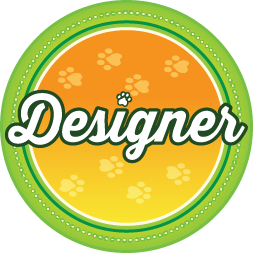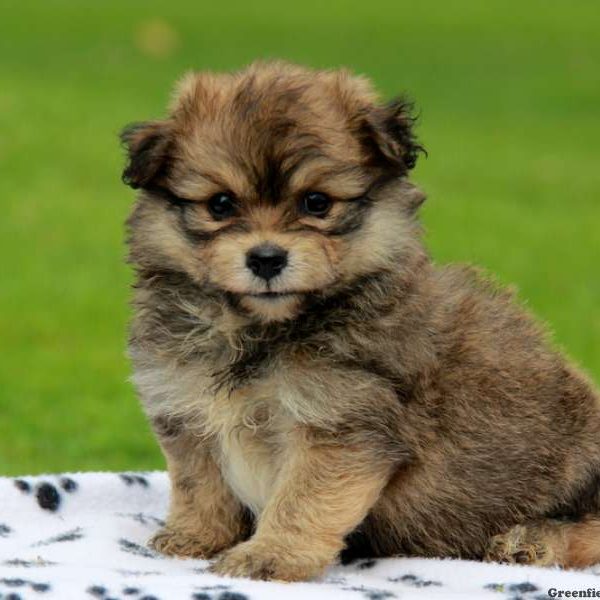
-
Activity Level:
moderate
-
Shedding Level:
low
-
Grooming Level:
high
-
Trainability:
high
-
Good for Novice Owners:
high
-
Adaptability:
high
-
Kid/Pet Friendly:
often
-
Prey Drive:
low
-
Watchdog:
very alert
- Average Size: Small
- Average Lifespan: 12-15 years
- Registered?: other
Bichon-a-ranian Dog Breed Information
Overview
Temperament
Adaptability
Health
Owner Experience
Grooming
Activity Level
Size
Life Span
Did You Know?
The Bichon-a-Ranian is a cross between a Bichon Frise and a Pomeranian. Although a mixed-breed dog can take on any combination of traits from one or both parents, a Bichon-a-Ranian is bred to be an ideal companion dog. They tend to be small, affectionate dogs with sweet demeanors, cheerful dispositions, and playful personalities.
Both parent breeds of the Bichon-a-Ranian are companion breeds that are devoted to their owners and thrive on attention and affection from them. They are known to love to cuddle! Their playful personality and sweet demeanor mean they get along well with children, other pets, and other dogs, as long as they are well-socialized.
As a small dog, they can be easily injured by accidental rough play or falls that can be common with very young children. So, any interactions between young kids and puppies should be closely supervised, and young children should be taught how to properly interact with a dog.
Although they tend to be more interested in making friends when they are well-socialized, they are still likely to bark to alert you to strangers. They can be prone to barking a lot, so it’s not a bad idea to train your dog to stop barking early on and continue to socialize them to keep barking from becoming a nuisance. These dogs tend to warm up to strangers, especially once they are introduced. After all, that is just another person to lavish them with the attention and praise they crave.
The Bichon-a-Ranian is a highly adaptable dog breed. Their small size and lower exercise requirements mean that they do well in apartments as well as homes with and without yards. As with any dog breed, they are sensitive to heat.
Because of their small size, they can also be sensitive to the cold despite their fluffy coat and may need to bundle up with some winter dog products to stay warm when temperatures drop. They also do not like to be left alone for long periods of time.
Although mixed-breed dogs can sometimes be healthier than their purebred counterparts, it is not a guarantee. A mixed-breed dog can inherit potential health issues common to one, both, or neither of the parent breeds. For the Bichon-a-Ranian, potential health concerns to be aware of can include luxating patella, hip dysplasia, gum disease, and eye issues.
Good breeding practices and the health of the parents make a big difference in the health of Bichon-a-ranian puppies. Reputable breeders will screen their dogs to avoid passing preventable issues on to puppies. So, don’t be afraid to talk to the breeder about the health and genetic history of both parents. As a small dog breed, the Bichon-a-Ranian is more prone to developing dental issues, but practicing good dental care for dogs early and consistently can help prevent them.
The Bichon-a-Ranian is a highly trainable dog breed that is a good fit for owners of all experience levels. They are intelligent dogs that are eager to please and love the positive attention that comes with performing tricks and basic commands.
There is always a chance that a Bichon-a-Ranian can inherit a stubborn streak from their Pomeranian parent. This can make training a little more challenging, but is nothing consistent training or the help of puppy training classes can’t handle. The benefits of puppy training classes also go beyond training. They also help strengthen the bond you have with your puppy and often offer opportunities to socialize puppies.
The Bichon-a-Ranian coat will be short and fluffy regardless of which parent they take after more. They may inherit a curly, low-shedding coat from their Bichon Frise parent, or they may inherit a coat that sheds a bit more from their Pomeranian parent. Whatever dog coat type they have, they’ll need daily brushing and grooming every 4-6 weeks.
Regardless of their coat, you will also need to care for your Bichon-a-Ranian’s nails, ears, and teeth. Cutting your dog’s nails once or twice monthly is usually enough to keep them from growing too long. You may need to trim them more often if your dog’s nails grow more quickly or aren’t wearing down as much on their own.
You also want to check their ears weekly and carefully clean your dog’s ears as needed. Ears should be dry, clean, and free of debris and pests. If you see redness, irritation, discolored or smelly discharge, or something else that is concerning, you know it’s time to visit the vet.
Gum disease is one of the most common health issues in dogs because dental care is often overlooked. Because the Bichon-a-Ranian is more prone to developing these dental issues, good dental care is even more important. Using an enzyme toothpaste or brushing your dog’s teeth every day, in addition to cleanings at the vet when needed, is ideal.
Although the Bichon-a-Ranian is a moderately active dog, they don’t need a lot of exercise to stay happy and healthy. Daily walks plus some playtime are usually enough for this small dog. They may be energetic at times, but they are also small and will tire out relatively easily.
A fully-grown Bichon-a-Ranian usually stands 7-12 inches tall and weighs 5-12 pounds.
A Bichon-a-Ranian generally lives for 12-15 years on average.
The Bichon-a-Ranian, which is sometimes unhyphenated as Bichonaranian, is also sometimes referred to as a Pomachon or a Pom Frise.






